“Serge Hollerbach: A Russian Painter in New York”
July 09, 2021
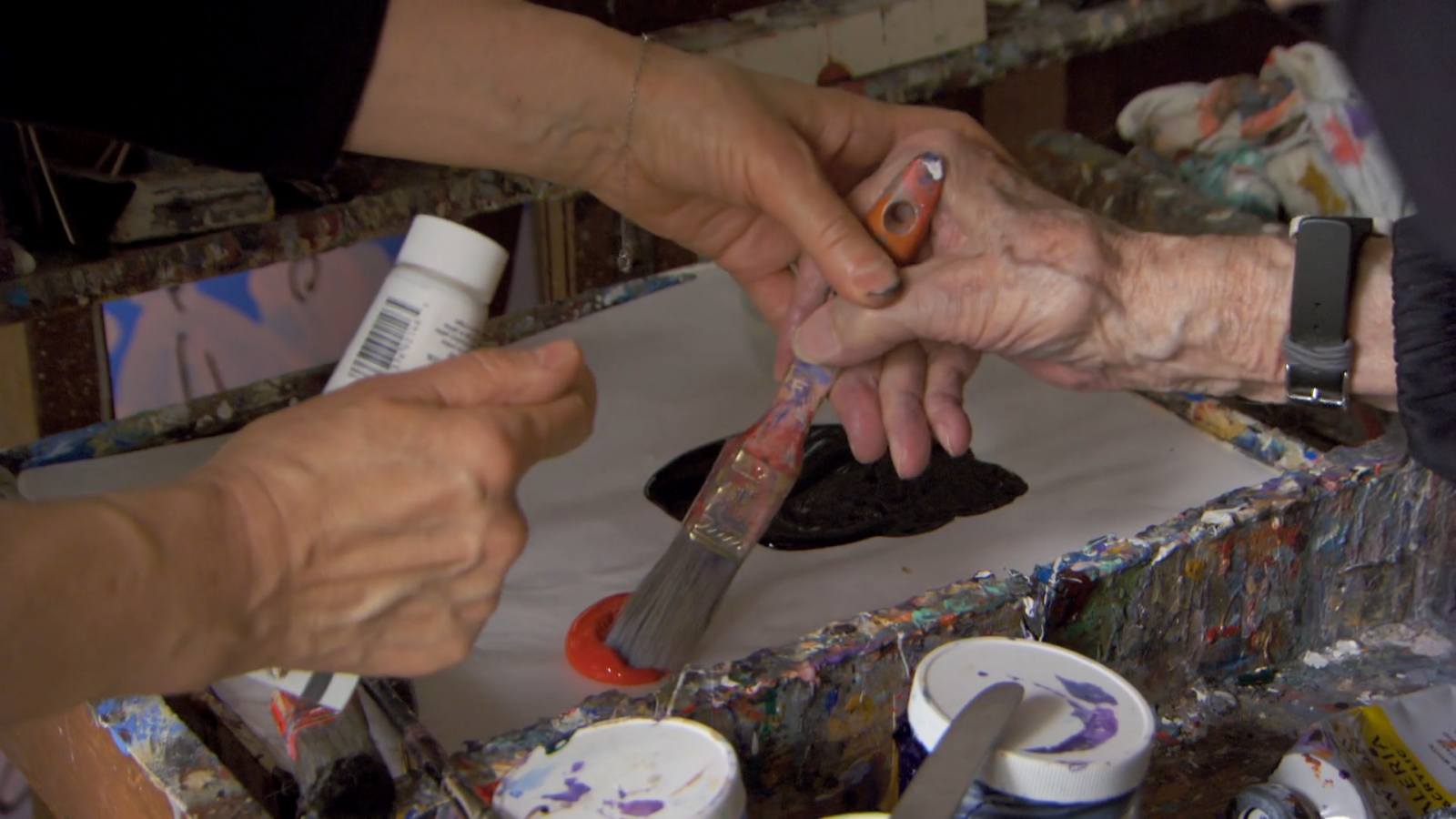
We filmed Serge Hollerbach (1923-2021) in 2015 and 2019 for a short documentary we recently completed, Serge Hollerbach: A Russian Painter in New York. In it, Hollerbach creates two paintings, separated in time by a period of four years during which he has visibly aged and his vision has declined. While painting, he discusses art, his displacement during World War II, building a new life in New York City, and how vision loss has affected his ability to paint.
Filming Serge in New York shortly before the pandemic
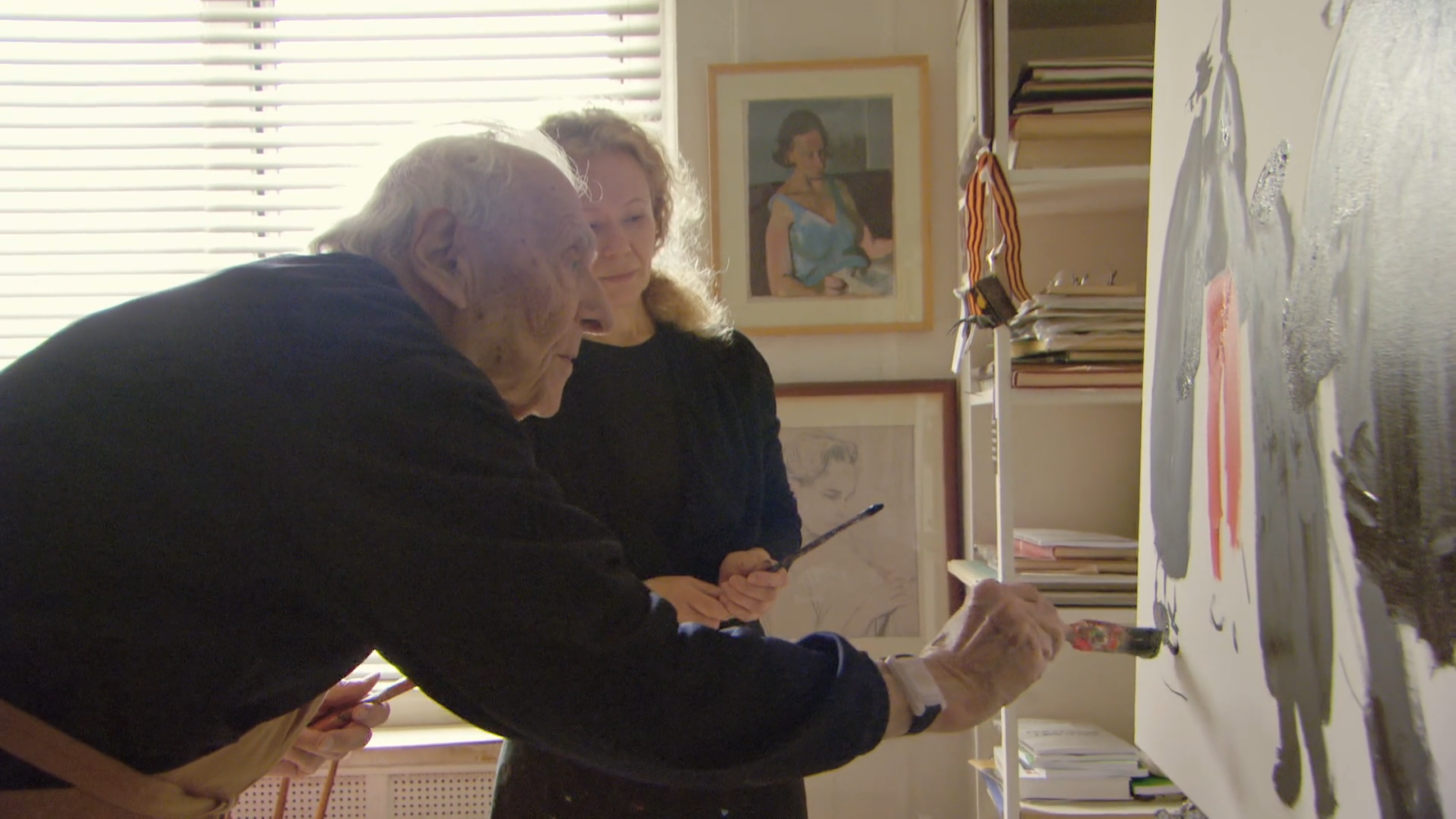
In December 2019, the Vision & Art Project’s Brian Schumacher and a small film crew spent three days filming Russian emigré artist Serge Hollerbach in New York City. We were making a short documentary about Hollerbach’s life and work and had also filmed him in 2015. But once we planned out our film, we realized we needed some additional footage. Between his cataracts and macular degeneration, Hollerbach, then 97 years old, was almost completely blind. He nonetheless graciously welcomed a film crew for the second time, which included our film editor (Bill Lattanzi), a cameraman (Bill Turnley), and sound engineer (Richard Buonagurio).
In general, Hollerbach was no longer painting much anymore. Nonetheless, he allowed us to film him creating a painting. Because his sight was so poor, his friend and former student, Olga Nenazhivina, served as his painting assistant.
His studio was on the fifth floor of an apartment building near West End Avenue. No more than 500 square feet, it must have been an efficiency flat before it became his studio. There was hardly room for six people, let alone the equipment that was needed for the shoot.
Hollerbach’s last painting—and the last time we were to see him
Over the next three days, Hollerbach painted in one-hour bursts with breaks in between. By the end of the filming, he had completed what was to be his last painting. Drawn from his mind’s eye, it pictured pedestrians on the Upper West Side—his “friends,” as he liked to say. “They don’t know who I am, but they are my friends.” Along with painting landscapes, nudes, and beach scenes, Hollerbach had long painted these sorts of street scenes. But, as his vision had declined, they had become increasingly abstract.
In contrast to our 2015 shoot, Hollerbach sometimes lost his way as he went to mix his paint or apply it to his canvas. That was because of how severe his vision loss had become. When that happened, Nenazhivina would take hold of his hand to guide it.
A December shoot had seemed risky. Along with filming Hollerbach in his studio, we wanted to capture him outside in his neighborhood, walking a few blocks, as he still then did, to do such errands as buy groceries or stop at a local diner for coffee. We were concerned the weather might be bad that week, which would make it hard for Hollerbach to negotiate the streets. We had thus considered putting the shoot off until the spring of 2021. In light of the pandemic, we’re glad we didn’t. Especially since, as it turned out, Serge Hollerbach passed away in March 2021. After working with him for several years, the last time we saw him was at that December shoot.
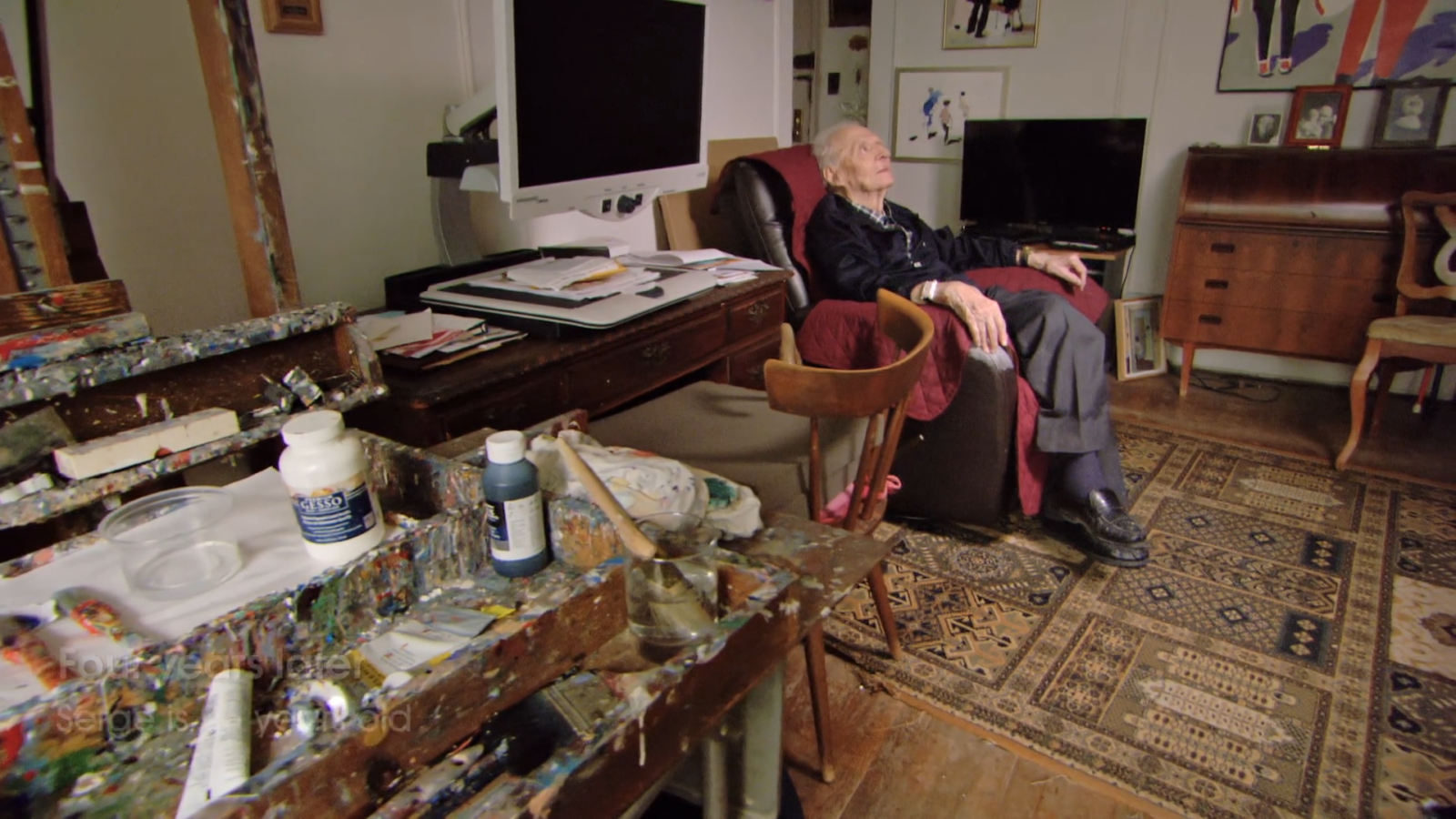
An overlooked passing
There’s been so much loss over the past year and a half that Hollerbach’s passing was somewhat overlooked. I don’t know of any notices (in English, at least), except for the American Watercolor Society’s remembrance. Perhaps it would have been so even had we not been in the midst of a pandemic when Hollerbach died. He’d had a successful career as a painter and teacher at, among other places, the National Academy of Design. But he was, by and large, a relatively unknown artist.
As we came to understand Hollerbach, he identified strongly with being a Russian émigré artist. It was central to who he was. He never quite seemed to altogether understand or fit into New York’s art scene. He was, to the end, an outsider, a stance his paintings embody in interesting and powerful ways.
A Russian emigré artist whose displacement shaped his artistic vision
Hollerbach was born in Pushkin, Russia, in 1923. In one of my last conversations with him, I called him to clarify his biography while I was working on our film. He said that during World War II he “should” have been in the Red Army. The reason he wasn’t was because he’d missed a year of school due to what he called a heart “mal-development.” As a result, he was a year behind his peers, hence wasn’t conscripted into the Army like other boys his age. Still, he volunteered to help the army do such things as dig trenches to protect Russia against a German invasion. In 1942, he was captured by the Germans. They forced him to work on a German farm in western Prussia. As bombardments intensified in Germany, life became very chaotic.
A forced laborer, he was frequently moved. He lived in a series of refugee camps, where prisoners, laborers, and refugees from all over Europe were mixed together. He lost his teeth.
At the end of the war, he was in southeastern Saxony. The Americans liberated him and took him to Munich. In the early 1950s, he got a visa to immigrate to the U.S. After a brief stint in Connecticut, he settled in New York, where he lived until his death.
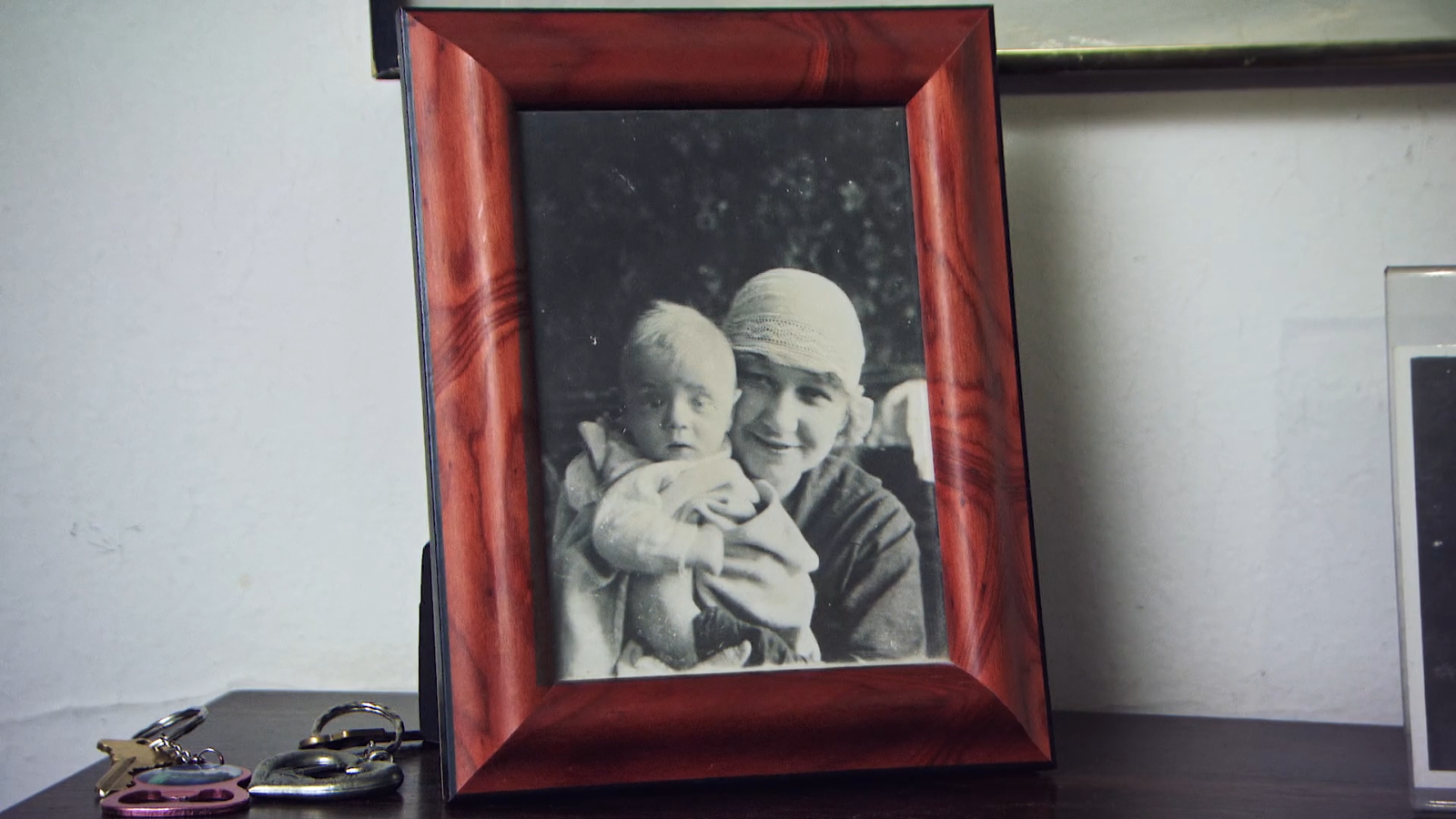
“A process of wear and tear”
Our short documentary captures Hollerbach’s philosophy of life — it is a “process of wear and tear.” It also touches on his difficult experiences as a displaced person during World War II.
By his own admission, these experiences led to his outlook on life. Perhaps they are also part of what made him so resilient in the face of macular degeneration. He was used to managing less-than-ideal circumstances and was matter-of-fact about his vision loss, embracing it as yet one more of life’s many challenges.
Hollerbach’s 2015 street scene
When he was done painting his demonstration piece in 2015, Hollerbach generously gave it to us. That’s the sort of person he was.
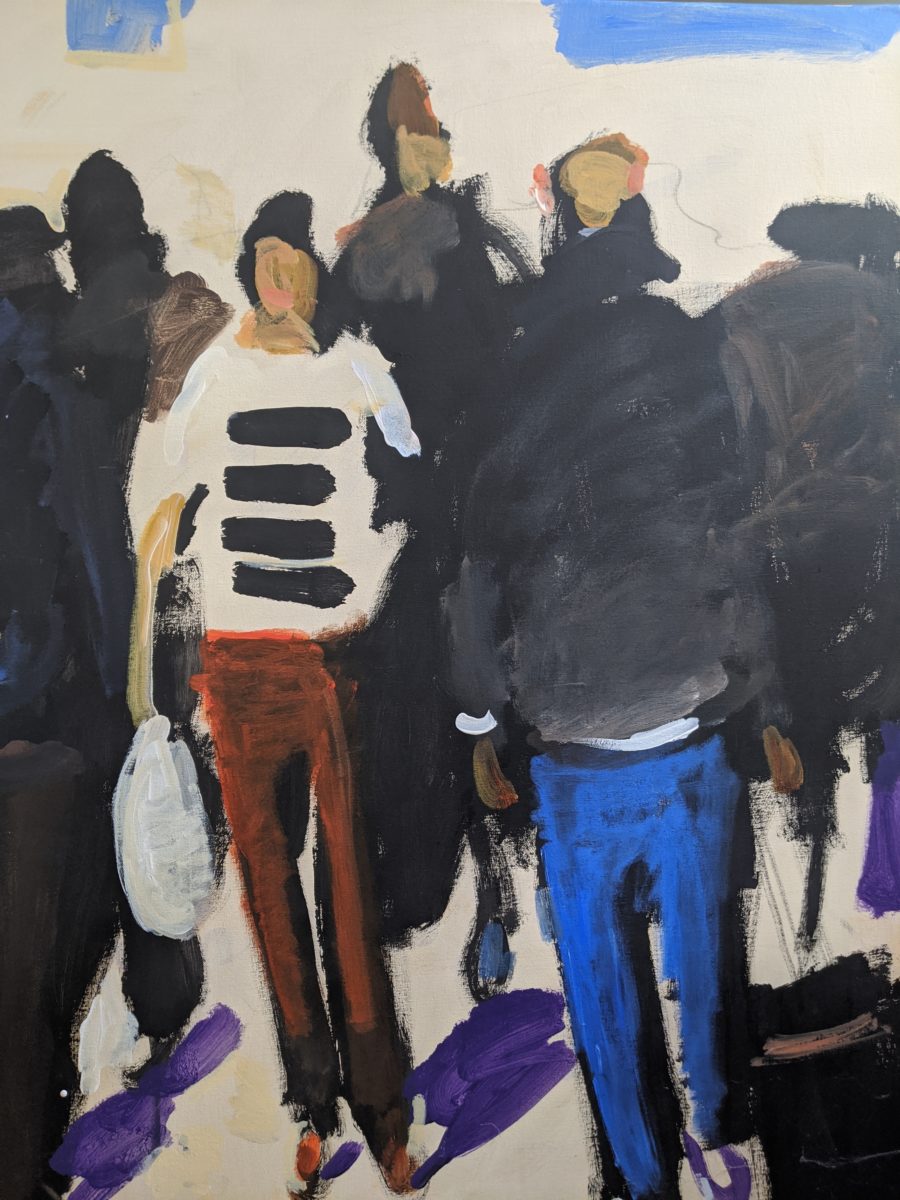
I’m looking at it now. It isn’t finished. Even in 2015, it would have been hard for Hollerbach to finish a work with the eyesight he then had left. It nonetheless has immediacy, charisma, and sense of motion. The figure just left of center faces me. He is one footstep away from walking off the canvas and into my dining room. The figure just right of center entered the painting a moment ago and has begun to stride away. In all, there are six figures, distinct only because I can see and count six heads.
They belong to a mass of bodies that are merging together. That happens among the ceaseless motion on the streets of New York: individual pedestrians abreast of one another, keeping pace with one another, marching together as one before peeling off, each to their own destination.
Dioxazine purple, notes of blue
Hollerbach scumbled in the shadows using unmixed dioxazine purple, his favorite color for shadows. He put a few notes of blue at the top of the canvas. That’s where the sky would go, he said, if he could have seen well enough to depict it. (It was remarkable to see him use a shorthand of abstracted shapes and colors to represent what he had in his mind’s eye, as he simultaneously verbalized what he imagined and made his marks.) One figure holds a bag. Another has a cane. A third pulls a rolling suitcase. Always in Hollerbach’s cityscapes, you see that: someone walking away with a suitcase. Which, I came to realize at one point, was how he’d arrived in America.
As I’ve studied this painting, it doesn’t seem to me too grandiose an interpretation to say it evokes a sense of how all of us in this time and place are traveling in closer association than we may realize. Traveling with our fellow citizens through life together on a planet we share.
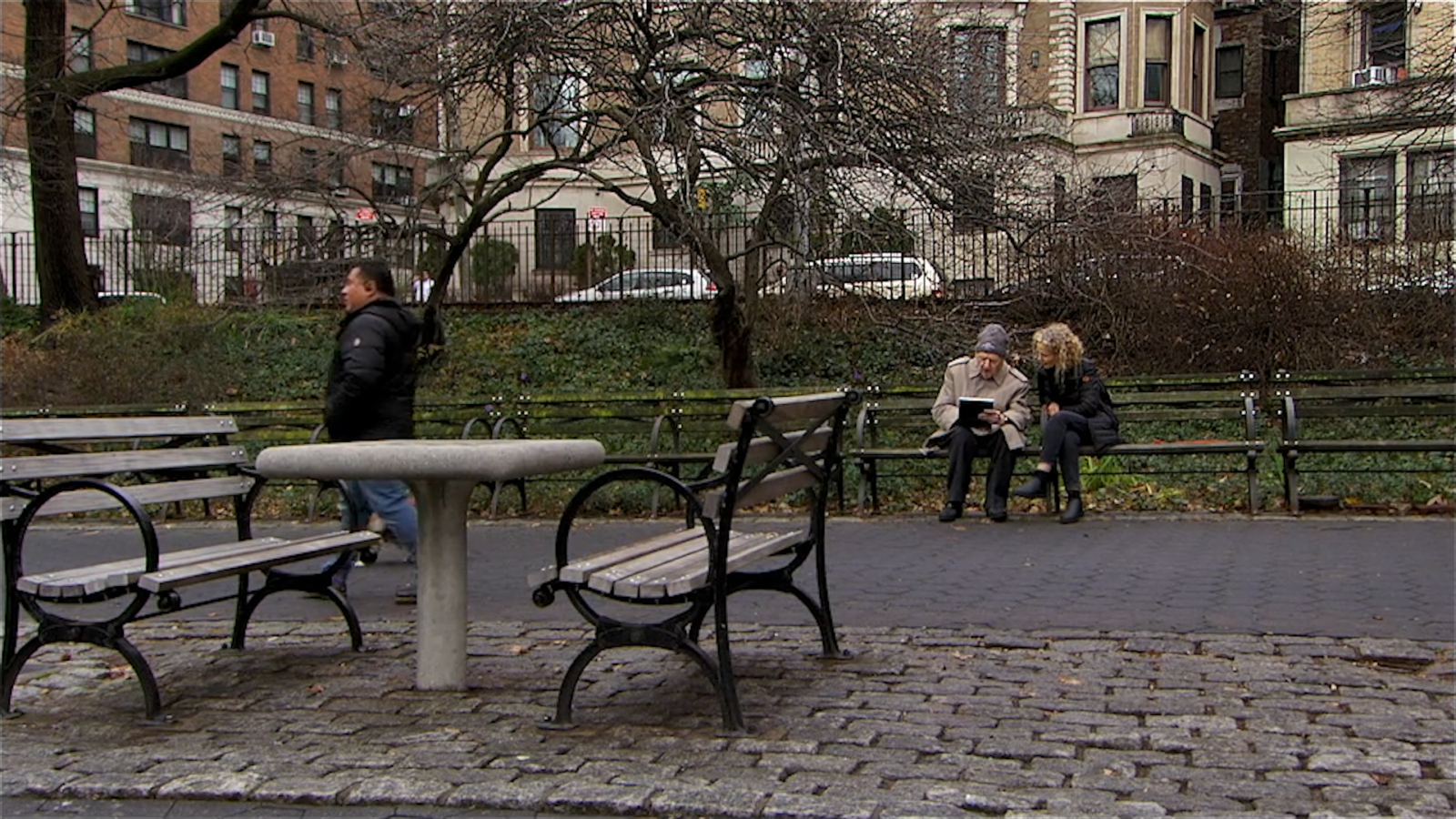

Comments
Wow A’Dora
I loved what you wrote…so anxious to see your film!
Drew
Thank you for this terrific article on my teacher and friend Serge. In the early 2000’s Serge had a workshop in NJ which I attended. His eyesight was not good at the time but he still managed to create wonderful art. One night the students took Serge to dinner, I offered to drive him in my new Mercedes convertible, Tchaikovsky on the radio and Serge in the passenger seat. He said “this is a moment I will never forget”. I haven’t either Serge, rest in peace. He was one terrific human!
You’re welcome and couldn’t agree with you more about Serge being one terrific human.
Thank you for this film. I studied with Serge
Hollerbach many years ago. He brought out the heat on all his students. A wonderful person and teacher.
Alene Schneierson
You’re more than welcome! Thanks for your comment. So interesting to hear that he “brought out the heat” in his students! As a painter myself, I would have liked to have known him as a teacher. He was certainly a font of knowledge and inspiration during the making this film.
All the best to you,
Brian
How might one see this film?
Thanks for reaching out. Currently the film is being screened in a range of film festivals. Soon after the New Year (Jan 2022), we’ll be releasing it on our website and YouTube. In the meantime, we have two similar films available on this site, one on the artist Lennart Anderson (https://visionandartproject.org/features/lennart-anderson-2/) and one on the artist and musician Robert Andrew Parker (https://visionandartproject.org/features/a-is-for-artist/). If you email us your contact information at aphillips.visonandartproject@gmail.com, we will let you know when the Serge Hollerbach film is available on our site.
I was fortunate to have taken a workshop with Serge over 10 years ago.
I painted a painting and it was pretty bad, I asked him if shadows would help, he got real close and said “too late for shadows” We both had a good laugh.
He was a beautiful person💞
Yes, he was a beautiful person. Although I didn’t have the good fortune of studying with him, I feel blessed to have known him.
I lived down the hall from Mr. Hollarbach. The trash room was across from my apartment. As I was taking out my trash one day, I noticed a treasure trove of sketches and paintings in a brown bag..all torn in half. I took them home and taped many of them back together. The first time I spoke to Serge, I sheepishly told him what I had done with his drafts. . The next night when I returned home from work, a painting was leaning on my door. The note attached read “if you like it, it’s yours.” I thanked him with a flower and a card and he then gifted me one of his books, again left at my door. He had a wonderful mirthful spirit and I will continue to adore even his throw away first and second drafts.
Leave a Comment